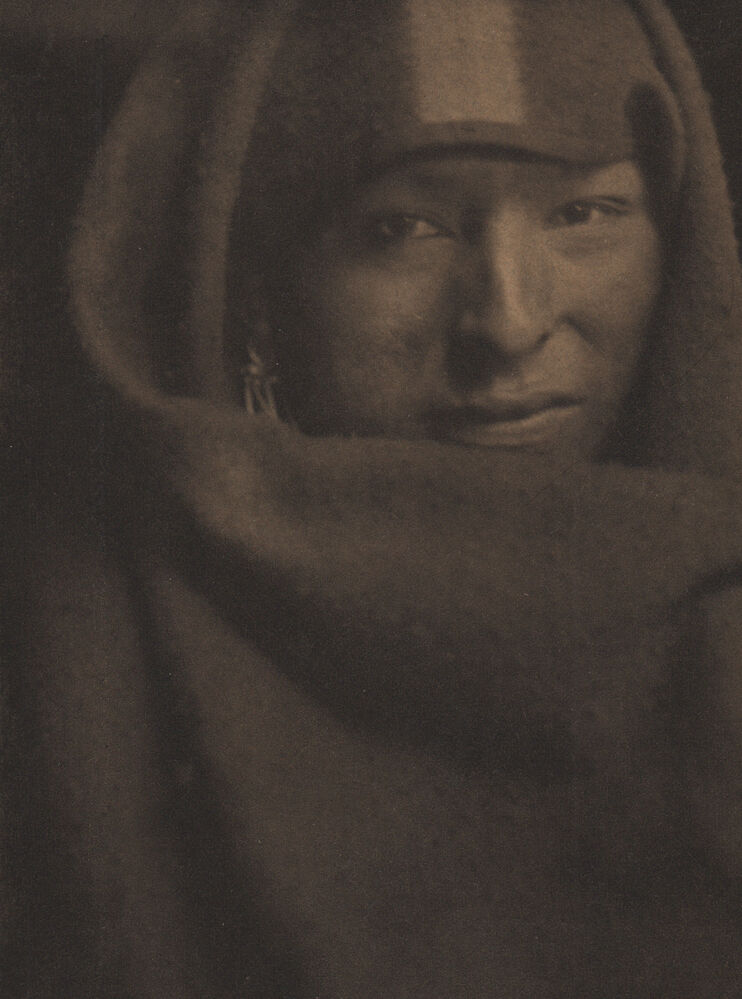
The Red Man, 1903
Gertrude Käsebier
1852 - 1934
Photogravure. 18.4 x 13.7 cm.
© Gertrude Käsebier
Om fotografen
Gertrude Käsebier, original name Gertrude Stanton, was an American portrait photographer. She was one of the founders of the influential Photo-Secession group and is best known for her evocative images of women and domestic scenes.
In 1864 her family moved to Brooklyn, New York. Ten years later she married Eduard Käsebier, a German immigrant and businessman. After raising her family, from 1889 to 1896 she studied art at the Pratt Institute in Brooklyn and quickly gravitated toward photography. Soon her work became recognized and was often exhibited. Her first solo exhibition was held in 1896 at the Boston Camera Club, and the following year Käsebier opened her own studio in New York City. Her photographs were included in the Philadelphia Photographic salons of 1898, 1899, and 1900. She exhibited her photograph titled The Manger at the salon of 1899, and it was purchased for $100, setting a new precedent in the photography art market. Her photographs also appeared in numerous magazines and were featured in the first issue of the influential Camera Work.
Like other photographers of the period working in the Pictorialist style, Käsebier was interested in promoting the medium as a fine art. As part of this effort, in 1902 she, Alfred Stieglitz, Clarence H. White, and Edward Steichen formed the Photo-Secession. She was also a member of the Professional Photographers of New York and of the Linked Ring in London and a cofounder of the Women’s Federation of the Photographers’ Association of America (1910). In 1916 she broke openly with Stieglitz and cofounded the Pictorial Photographers of America with White. About 1927 she closed her portrait studio. A retrospective exhibition of her photography was held at the Brooklyn Institute of Arts and Sciences in 1929.
Käsebier is best known for her sensitive depictions of motherhood and for her numerous portraits, often of famous artists and writers, including studies of the sculptor Auguste Rodin. In all her work she attempted to capture a symbolic, yet intimate view of her subjects. Käsebier worked primarily with platinum prints, although she began using a gum-bichromate process in 1901. Like many fellow Pictorialists, she often manipulated her photographs to fit her artistic intentions.
In the late 20th and the 21st century Kasebier was the subject of many exhibitions, including two major retrospectives, one at the Delaware Art Museum in 1979 and the other at the Museum of Modern Art in New York City (which later traveled to the Philadelphia Museum of Art) in 1992. Her best-known photograph, Blessed Art Thou Among Women (1899), was featured on a U.S. postage stamp in 2002.
Gertrude Käsebier